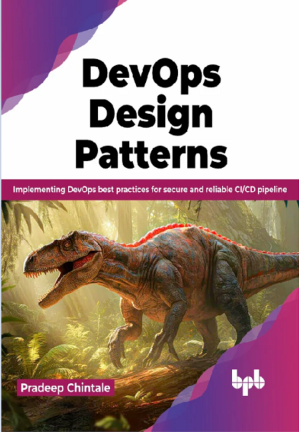I recently had the pleasure of reviewing “DevOps Design Patterns” by Pradeep Chintale, and I must say, this book is a must-read for anyone serious about mastering DevOps. The author’s knack for simplifying complex DevOps concepts shines through in every chapter, making it accessible for both beginners and intermediate-level users.
Key Takeaways from the Book
🌐 Why DevOps
The book starts by unveiling the ‘Why’ behind DevOps. Understanding the purpose and benefits of adopting DevOps is crucial for any organization looking to enhance their development and operational processes. It effectively outlines how DevOps fosters a culture of collaboration, improves software delivery speed, and ensures higher quality releases.
🔄 Version Control
The book dives into mastering tracking and version control, an essential aspect of DevOps. It emphasizes the importance of version control systems (VCS) like Git, explaining how they facilitate collaboration and ensure a reliable history of changes.
🛠️ Dynamic Environments
The book emphasizes the importance of setting up flexible development spaces. It offers insights into creating environments that can adapt to the evolving needs of both development and operations teams. This adaptability is crucial for maintaining high productivity and responsiveness in fast-paced development cycles.
🛠️🚀 CI/CD
Central to DevOps practices is the streamlining of code integration and continuous delivery (CI/CD). The book offers an in-depth guide on establishing CI/CD pipelines, demonstrating how automated building, testing, and deployment processes can drastically cut down time-to-market and enhance product quality.
📦 Automated Testing
Automated testing is a cornerstone of reliable software delivery. The book navigates the testing landscape, covering different types of tests (unit, integration, and end-to-end) and how to automate them effectively to catch issues early in the development cycle.
🚨 Security Focus
In today’s digital world, security cannot be an afterthought. The book emphasizes a strong security focus, providing strategies for rapidly detecting compliance issues and security risks. It introduces DevSecOps principles, integrating security into every step of the development and deployment process.
↩️ Rollback Strategies
Crafting effective rollback plans is essential for minimizing downtime and mitigating risks during deployments. The book outlines various rollback strategies, ensuring that teams are prepared to quickly revert changes in case of issues, thus maintaining system stability and user trust.
☁️ Automated Infrastructure
The book excels in orchestrating infrastructure seamlessly. It covers infrastructure as code (IaC) tools like Terraform and Ansible, demonstrating how to automate infrastructure provisioning and management, leading to consistent and repeatable environments.
🛡️ DevSecOps
Elevating security in every step is critical, and the book does an excellent job of integrating DevSecOps practices. It provides a detailed look at embedding security measures throughout the CI/CD pipeline, ensuring that security is a continuous and automated process.
Final Thoughts
👏 Kudos to the author for demystifying DevOps concepts and offering a practical guide! “DevOps Design Patterns” is ideal for newcomers embarking on their DevOps journey as well as intermediate users seeking to expand their knowledge. This book not only covers the ‘how’ but also delves into the important ‘why’ behind each concept, making it a valuable resource for everyone in software development and operations.
If you’re serious about mastering DevOps, this book should be on your reading list. It’s a comprehensive, practical guide that will help you streamline your processes, improve collaboration, and deliver high-quality software faster and more securely.



